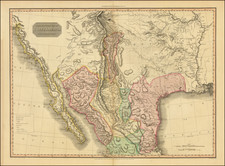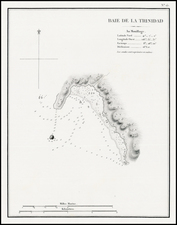Birdseye view promotional map for Dana Point, published by its original developer.
The map appears in a printed brochure entitled Homes In Dana Point and the verso has pictures of numerous such homes.
Dana Point was named for Richard Henry Dana, Jr., author of "Two Years Before The Mast". Dana referred to Stillwater Bay as the most Romantic spot on the Coast. Dana was traveling aboard the brig Pilgrim, which at the time had to travel to California via Cape Horn and the Straits of Magellan.
In 1923, Los Angeles Times publisher Harry Chandler and General M.H. Sherman, Director of the Pacific Electric Railway Company, created a major real estate group to develop what is known today as the Hollywood Hills, Sidney H. Woodruff, already a prominent Los Angeles homebuilder, was hired to lead the project. In 1926, Woodruff, Chandler, and Sherman, created the Dana Point Syndicate. They invited other heavy hitters, company presidents, movie producers, and real estate investors, to join them in purchasing 1,388 acres of land, some of which includes the "Headlands" of today. Promising tree-lined, paved streets, electricity, telephones, sidewalks, water mains, storm drains, sewers, and other amenities, Woodruff built 35 homes and a number of commercial buildings.
Most of these "Woodruff" houses are concentrated in a Dana Point's historic core, also called Lantern Village (currently about 12,000 residents). The streets are named after the different colored lanterns, street of the Violet Lantern, Blue Lantern, etc. (colored lanterns were used by ships 200 years ago to advertise their fares when pulled into the Dana Point natural harbor). His crowning structure was to be the Dana Point Inn, a Mediterranean-like resort hotel. After a celebratory groundbreaking in 1930, a three-story foundation was poured and a 135-foot (41 m) elevator shaft was dug. Unfortunately, the Depression caused construction to halt. Although Woodruff continuously sought financial support through the years, this project was abandoned in 1939. Subsequently, he sold the remaining holdings of the Dana Point Syndicate. Thirty-four of the original Woodruff residences are still occupied.
Only 1 surviving example (Yale).









![(Bird's-Eye View of California) San Francisco Invites You [cover title]](https://storage.googleapis.com/raremaps/img/small/92552.jpg)


![[ Gold Rush Era Sacramento ] Chart of the Sacramento River From Suisun City to the American River California . . . 1850](https://storage.googleapis.com/raremaps/img/small/98242.jpg)
![[Berkeley] This Is The Map of Berkeley Town Its Streets Go Winding Up & Down An Oak-Covered Campus It Wears For A Crown With People & Places of Renown](https://storage.googleapis.com/raremaps/img/small/97201.jpg)
![California Water and Mining Co. [with:] Map of El Dorado County, Cal. Showing the Georgetown Divide and Portions of the Placerville and Forrest Hill Divide with the Ditches, Mines and Other Properties of the California Water Co. Situated Between The South Fork of Middle Fork and the South Fork of the American River 1880](https://storage.googleapis.com/raremaps/img/small/91927.jpg)